By Nijmie Zakkiyyah Dzurinko, Phil Wider, and J.E. Hubay
Introduction
In the University of the Poor network we often say that the first step in uniting the poor and dispossessed is identifying, developing, and uniting the leaders of our class. Less often stated, but just as critical, is the understanding that the most fruitful way to identify, develop, and unite leaders is actually in the concrete work to organize and unite our class. If this is the case, then we must ensure that every aspect of the struggle to unite our class, to build the politically impactful and independent mass organization of our class, contributes to identifying, developing, and uniting leaders. When we do this, we are making the struggle a school. We are making sure that leadership development is not just another thing on our list, but rather it is the list itself.
Perhaps the greatest strength of our statewide organization in Pennsylvania, Put People First! PA (PPF-PA), is that everything we do is about making the struggle a school for forging the kinds of leaders our class needs. While this has been in the DNA of our organization since its inception (building on PPF-PA’s founders’ experiences and studies of both making and having failed to make the struggle a school), we have made and continue to make serious advances in this effort. In fact, most of the significant changes that we’ve made in our organizing work have been in response to challenges in organizing and leadership development. In this sense, we have come to see that a learning organization (one that constantly learns from experiences and then adapts) is key to developing leaders who can resolve problems of organization and leadership development.
As we approach PPF-PA’s 10th Anniversary, we are clear that our ability to be successful on a challenging organizing terrain and in the face of a sophisticated enemy is largely due to having leaders who learned from both their own and others’ experiences. We also are clear that our ability to further grow in ways that we need depends on continuing to refine our approach to making the struggle a school.
What creates the conditions to develop leaders?
The organizing approach of PPF-PA builds on decades of experiences from leaders in our network and earlier efforts like the National Welfare Rights Organization and the original National Union of the Homeless. For the last two years, we have also borrowed and learned from the Landless Workers Movement in Brazil (MST) in formulating three interrelated cornerstones for our organization: the class struggle, the classroom, and the class organization.
- Class struggle: Campaigns politicize, organize, and unite the poor on the basis of their common struggle for survival;
- Classroom: Political education must be at the center of political organizing;
- Class organization: The organizational infrastructure — teams and committees — and the web of relationships, systems, processes, and communications that holds it together.
All three of these components create the container in which leaders are formed in PPF-PA. No one element by itself has proven sufficient to develop the clarity, commitment, connectedness, and competence necessary for emerging leaders to become revolutionaries. And it’s not just about mechanically checking off boxes — these elements have to be imbued with the spirit of the struggle. All three of these elements must be combined intentionally and systematically by leaders who are aware of what they are doing, and who can wield them effectively and in relationship to each other so as to develop other leaders.
For example, we might approach a free dental clinic mechanically as a place to base build — as if it’s just about trying to develop a longer list of contacts for the organization. However, using our methodology to the fullest would require going beyond that one task (which is itself critical) to study the entities that hold the clinic, using our political education process to break down the difference between charity and projects of survival. We would share with newer PPF-PA members the history of our relationship to this clinic and the years-long struggle it took us to be able to engage the patients there. We would reach out to our own members and contacts to let them know about the clinic and help provide them with transportation to attend in order to take care of their own needs. And we would prepare and train our folks to have organizing conversations and create a plan for follow-up with the people they met at the clinic. Then we would organize a calling party to re-engage all of our new contacts, and we might even hold a special meeting after the clinic focused on dental care for contacts that we made to come and share their experiences. In fact, one of our Healthcare Rights Committees (HRC) did all of these things after a recent free dental clinic where we made over 100 contacts and had 15 meaningful conversations during the follow-up calling party.
Beyond the raw numbers, this HRC used this process to develop the clarity, commitment, competence, and connectedness of their own members. Far from being simply a task that we organized people to do, the free dental clinic became a learning experience and one that deepened our relationships with each other. As one of our members remarked: “When I first heard about the dental clinic, I wasn’t that interested in going out to base build. But then when I heard our history and struggle to be able to be there, I was very motivated to participate.” These are the kinds of experiences that form people and cement their commitment to the struggle for the long haul. Here you see all three elements of our organizing coming together in action:
- Class struggle: our fight to restore the adult dental benefit in Medicaid;
- Classroom: our study of the organization behind the charity event, and reflection on how this is different from what we are doing with our projects of survival;
- Class organization: our members learning new base building skills to build up more contacts and turn these contacts into new members.
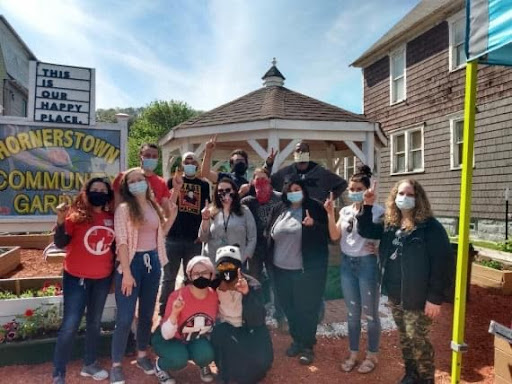
So what’s the role of the Healthcare Is a Human Right campaign in all of this?
In conventional “community organizing,” a campaign is pretty much all there is. There is some attention to the class struggle, although the work is neither articulated in those terms nor as broadly conceptualized and put into practice. And there is almost no attention given to the classroom and the class organization. In the “poor organizing the poor” model of political organizing that grounds PPF-PA, campaigning is very important when combined with the other two elements. Our organizing must take into account and move people through what they have been taught to think (the mental fortresses that advance dominant ruling class ideology), how they have been taught to think (for instance, the pragmatism that is ever-present in our society), and the disorganizing behaviors that in many ways are the result of that thinking. We are constantly plowing the field of old ideas so we can plant the seeds of new ideas. We must ensure that the fight of our campaigns teaches and develops our leaders.
How do we ensure that we don’t campaign in a pragmatic way — based on a surface-level understanding of the problems facing our class? How do we construct campaigns that get to the root of these problems and thus engage and develop people for the long haul? This may seem like an oxymoron, since campaigns are by nature time limited and focused on “winning.” Here are a few ways that PPF-PA thinks about campaigning differently from traditional community organizing that emphasizes the “win” of a campaign over everything else (or what is known as “Alinsky-style organizing,” named after the influential organizer Saul Alinksy):
| Alinsky-style “community organizing” | “The poor organizing the poor” model as practiced by PPF-PA | |
| What a campaign is | Strictly winnable. Often orchestrated by professionalized staff with member leaders playing bit roles when called upon to mobilize. Narrowly defined against a specific corporate or government target. | Aspirational and visionary, comprised of discrete cycles that build on each other. Created through a collective process that is fully owned and reliant on the membership to commit to and carry out. Designed to unveil the entire system and to cohere the class as a whole, beyond any one segment of the class or group of workers. |
| What keeps people engaged | “Wins” – the theory is that you start with “low-hanging fruit” that you can easily achieve in order to claim victory and keep people committed. | Centering political education helps to develop people’s deep commitment and an understanding of what we’re truly up against and thus encourages them to commit for the long haul. |
| What winning looks like | Achieving a policy change, passing a law, or getting someone elected. Though sometimes significant, oftentimes are “on paper” victories more geared toward pleasing an audience of funders than making real change for the base. | Concrete milestones that let us know that we’re making progress are identified and achieved – but it’s also particularly important to understand the real limitations of what is possible in the current political economy. What’s important is to be able to define what victory is for ourselves – including both campaign objectives, and victories related to the development of leaders and the expansion of our base. |
| What a Leader is | Someone who is actively engaged, and a good “face” for the issue. Often a spokesperson who is called upon to share their story in front of the media or power-holders. | Someone who is consciously developed over a long period of time through an intentional leadership development process. Someone who is actively developing other leaders. Someone who is able to wield the components of the organizing model to grow the organization. |
One key way PPF-PA campaigns through the “poor organizing the poor” model is through its Healthcare Is a Human Right campaign (HCHR). To start, we built this campaign for two strategic reasons. First, this is a campaign that has the potential to unite our class as a class, since the poor and dispossessed across all lines of division have a common interest in winning the struggle for healthcare as a human right. Second, this is a struggle that directly comes up against the state — elected officials and the profiteers who pull their strings. Both the actual effort to unite our class and the experience of coming up against the state are critical to developing leaders of our class who can lead the protracted struggle against our enemies.
Every year, the PPF-PA campaign plan, which guides our work for the following year, is co-created by the entire active membership in a five-month participatory and democratic process beginning with the Membership Assembly in October and ending with ratification at the Steering Committee retreat in February.
There have been different phases of the HCHR campaign. In 2016 and 2017, we targeted the Pennsylvania Insurance Department (PID) to fight the health insurance rate hikes proposed by the insurance companies. We achieved greater transparency and participation in the rate review process by securing the first ever public hearing where insurance giants were called before the public to justify their proposed increases, which we countered with the testimonies of more than three dozen impacted people across the state. The next year we compelled the PID to do a series of public town halls throughout the state to enable greater participation by our members in the communities where they live. Through this phase of campaigning we came to learn that the PID is in the back pocket of the insurance profiteers, so in 2018 we pivoted to a fight to create an office of the Public Healthcare Advocate (PHA) at the state level. We designed the position of the PHA to be able to investigate, litigate, and advocate for the interests of the poor and dispossessed, and to be accountable to people and organizations of our class through a Community Advisory Board. (You can read the full report on our website.) A bill introducing legislation that we initially drafted is currently in the state legislature’s Health Committee (HB 1828). This medium-term campaign for the PHA is a vehicle we are using to develop leaders within PPF-PA, as we advance our organizing toward winning the right to universal healthcare.
Why do we have to build on the class struggle with the classroom?
First, when we say classroom we are not talking about the kinds of oppressive/traumatizing schooling that many of us experienced in K-12 or beyond. We are talking about grounded educational spaces that speak to the challenges and problems of the poor organizing the poor. In this effort, we are inspired by the Brazilian Landless Workers Movement (MST), which states that “the working class has a right to study.”
As our members engage in the class struggle and come up against the State, assume more organizational responsibility, and confront the challenges of the poor organizing the poor, they become thirsty to learn from not just their own and the organization’s experience, but also from other experiences of the past and present. Without studying other struggles of the poor and dispossessed, historical and contemporary, domestic and international, our members will not develop as leaders who can maneuver on a complex terrain against a sophisticated enemy. The forces we are up against have studied social movements and the class struggle, and our leaders must do the same. All of our studies are geared to moving our members and leaders from a position of just accepting our theory of change and organizing approach to understanding, wielding, and mastering them.
In PPF-PA, the classroom manifests in different ways. Almost every organizational meeting (e.g. HRCs, Teams and the Steering Committee) starts with an educational component. We also conduct monthly educationals — which ground our newer members in the basics of PPF-PA’s theory of change and organizing approach — and seasonal studies in winter and summer. Seasonal studies are oriented to active members and coordinators, and in recent years they have focused on the political economy of healthcare, the original Poor People’s Campaign, lessons from the 1930s, the “poor organizing the poor” model, and the analytical and strategic underpinnings of PPF-PA’s theory of change. In many of these seasonal studies, we have invited our strategic partners to collaborate with us on the design and implementation of the course and to send their members to participate.
PPF-PA also has a formal process that we call “Struggle Is A School” (SIAS), which consists of politically debriefing and reflecting on our organizing activities so as to identify and study the political lessons of this work. We make our struggle a school when we combine the political organizing lessons from our work with the lessons we have learned from studying history, politics, economics, and other contemporary efforts to unite and organize the poor and dispossessed. SIAS is not the same as the typical non-profit “plus/minus/delta” evaluation. In our SIAS process, we are asking questions like: 1) what did we learn about our class and the ruling class; 2) how did we build our organization and develop leaders; 3) what challenges (in uniting our class, working with partners, media relations, etc.) did we come up against and how are we overcoming these challenges, and more. In the process of collectively discussing such questions, we are both distilling valuable political lessons from our activity to share out across the organization and training our leaders to conduct such political debriefs.
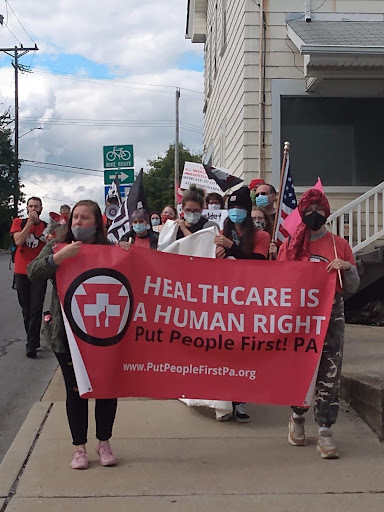
Since its inception, PPF-PA has had a Political Education and Leadership Development team that has focused on this ingredient of our organizing. The team does not do all the political education and leadership development in the organization, but rather is tasked with systematizing, sharpening, refining, and ensuring that this work happens.
Class organization is how we bring it all together
Ultimately, building leaders and making the struggle a school means scaffolding structures where those leaders can be developed over time. So there is a strong relationship between organizational development and leadership development. We are constantly striving to systematize the development of collectives, as well as the leaders of collectives. Our organization has always been member-led and driven, only ever having 2-3 part-time paid staff at any given time. In the last year we have succeeded in evolving into a structure that doesn’t have any staff leadership at all. This is one of the factors that demands that we make the struggle a school, since we can’t rely on staff for a fallback. While it might seem counterintuitive, this has actually opened up more space for us to develop the leaders we need.
Our leadership development pathway charts the growth of someone from a new member, to an active member, to a coordinator, to a root coordinator (a coordinator of coordinators), to cadre. It provides a clear vision for members of the possibilities for their growth as a leader in PPF-PA (and other organizations of our class). In addition, it is a tool we use to see what organizational activities can support the step-by-step progression of a leader developing their clarity, competence, commitment, and connection. As leaders move along the leadership development path, they assume more responsibility and are offered more political education, training, mentoring, and support. The full and embodied use of the leadership development pathway is constantly in process in terms of getting all coordinators across the organization to internalize and employ it in mentoring the leaders they are developing.
The movement of an individual leader along the leadership development pathway also reflects the structure of the statewide organization. As a leader takes on more responsibility, they also step onto collectives that are tasked with carrying out those greater and more challenging tasks. For example, one member of the organization was brought in as a new member by their partner. They became an active member of their HRC, and after a time they were invited to join a statewide team. They demonstrated leadership on the team as well, and were invited to become one of the co-coordinators of that team. Being a coordinator of a team or HRC also brings a leader onto PPF-PA’s Steering Committee.
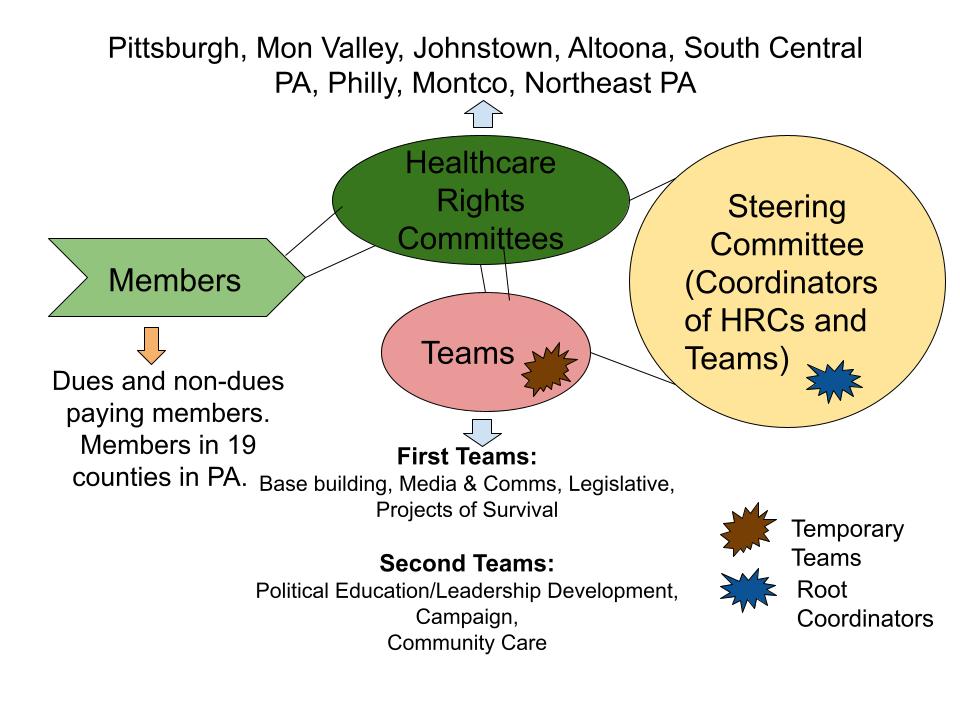
PPF-PA leaders hit a limit in their development if they only engage with the work of our organization and do not connect with leaders from other fronts of struggle, and in processes of other forms of organization of the poor and dispossessed. Just as PPF-PA invites our strategic partners to send their up-and-coming leaders to our courses, assemblies, organizing exchanges, and retreats, we also benefit from opportunities to send delegations of our leaders to these same kinds of courses and events across our national and international network. Participating in and co-constructing these kinds of gatherings deepens the understanding of our coordinators, and those heading to coordination, regarding the breadth and depth of the class struggle. These gatherings have been conducted by other mass formations: Vermont Workers’ Center, NC Raise Up, National Union of the Homeless, Poor People’s Campaign: National Call for Moral Revival, Nonviolent Medicaid Army, and other kinds of organizations like the University of the Poor and the Popular Education Project, as well as the International People’s Assembly and the associated network of schools.
PPF-PA and other mass organizations of our class must meet our class where it is. They must identify leaders emerging out of the frontline struggles of various sections of our class and launch these leaders on their path to becoming political strategists and organizers of our class as a whole. While membership, leadership, and work in PPF-PA and organizations like it are critical to the development of cadres, this is also insufficient. Emerging leaders must join with others like them in spaces that are specifically designed to politically and theoretically develop these leaders into cadres. In this sense, participation in and coordination of University of the Poor schools, courses and projects have been invaluable to our members’ development.
Forging Revolutionaries by Making the Struggle a School
The combination of the class struggle, classroom, and class organization has the power to address the different mental fortresses, pragmatism, and disorganizing behaviors with which people come into our organizations. One common trap that people fall into is confusing a political collective with a group of people who like each other or who are “like-minded.” We always have to remember that we are not organizing activists or “leftists”: we are organizing the 140 million people who are poor or near poor in this country. We are striving not for small clubs who see themselves as “different” than other people in their areas, but for our organizations to become political centers of gravity for the poor and dispossessed. This means that our organizations must become visible, politically active, relevant, and independent poles that draw poor and dispossessed people toward them and facilitate their fight for themselves and their families.
While our commitment in PPF-PA to building the nonviolent army of the poor has remained constant, our approach to organizing and leadership development is continuously being refined. We’ve learned by trying things out, making mistakes, and by combining the class struggle with the classroom and the class organization. We are part of a lineage of struggle of poor and dispossessed people — our fights and formations must forge us into the revolutionaries we have to become. As members of the University of the Poor and as revolutionaries, we must commit ourselves to both making our present struggles a school, and to sharpening our leadership as perpetual students and shapers of the living history of class struggle.
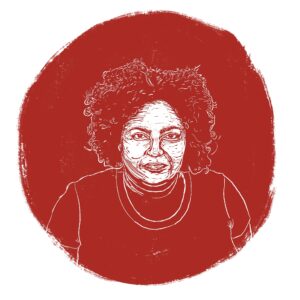
Nijmie Zakkiyyah Dzurinko (she or they) is a working class Black, Indigenous and queer organizer, healer, and strategist of over 20 years from Pennsylvania. She is co-founder of Put People First! PA, a working class, statewide, base building human rights organization waging a healthcare is a human right campaign. They are also a co-chair of the Pennsylvania Poor People’s Campaign: A National Call for Moral Revival.
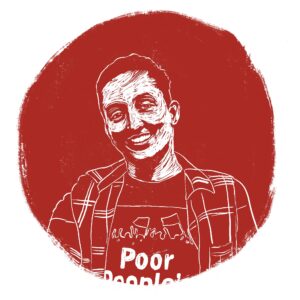
J. E. Hubay (they/them or he/him) is a member of the University of the Poor, a member of the organizing committee of the PA Homeless Union, and for the last five years — a leader in Put People First! PA. They are a working class, queer and trans organizer, healer, and service worker who grew up in the Rustbelt of Northeast Ohio, now living in Philadelphia since 2014.
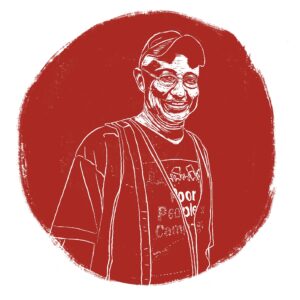
Phil Wider has been an organizer and political educator in the U.S. movement to end poverty for over three decades. His entry point to the U.S. survival movement was through the Philadelphia/Delaware Valley Union of the Homeless, a lead chapter of the National Union of the Homeless. He’s currently a co-coordinator of Political Education and Leadership Development with Put People First! PA, a member of the Popular Education Project, and a co-coordinator of the University of the Poor’s Political Coordination Committee and Standing Committee.
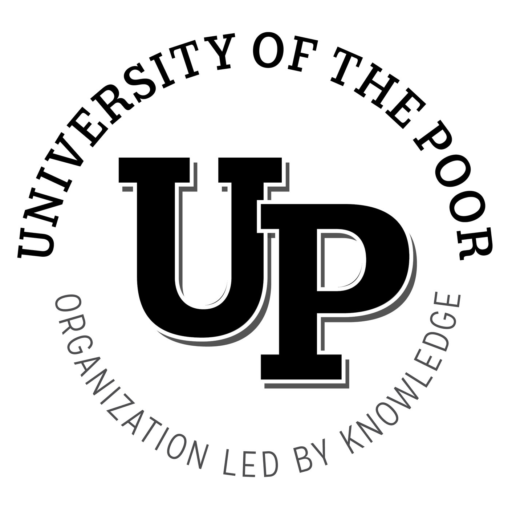
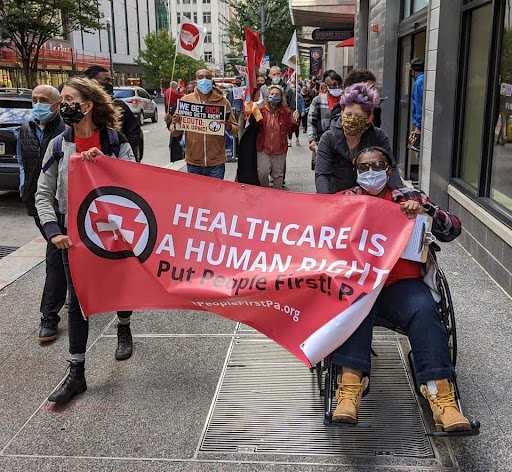
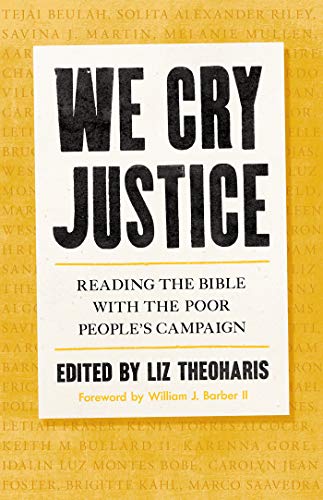
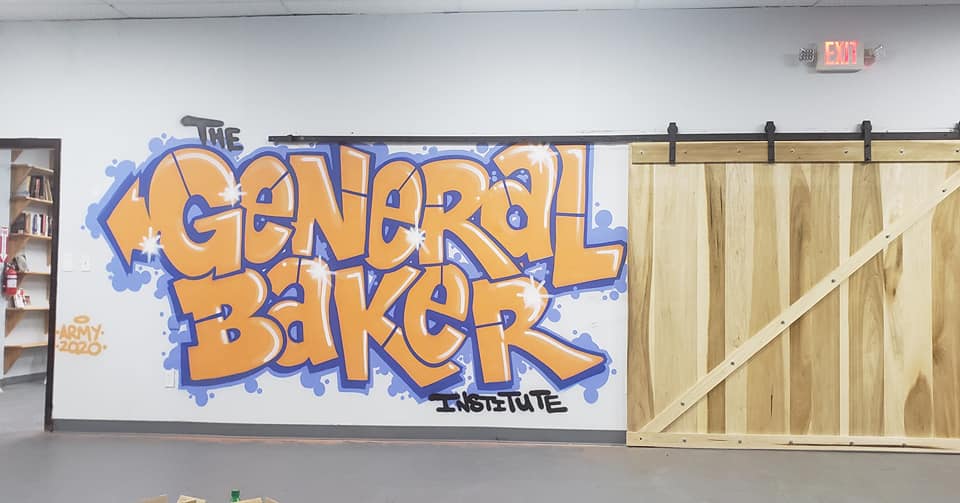
this is such a clear road map through rough uncharted terrain. Also slightly daunting in feeling like this is the only way to move ahead. But also it is exciting to read about PPFPA and your tremendous achievements. Congratulations, and thenks for the instructiuon.
thanks Peter!